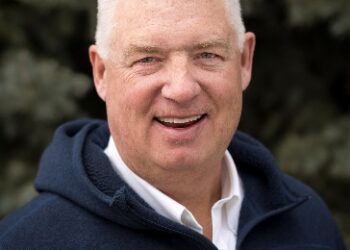MSU News Service
BOZEMAN – Montana State University faculty and students are back in Antarctica working on the tail end of a five-year grant from the National Science Foundation. The team is monitoring Weddell seals in the most pristine ocean left in the world, but dramatic changes in the sea ice are causing new challenges. Specifically, the ice is too thin.
MSU ecologist and principal investigator Bob Garrott said their study area sits atop first-year ice, meaning it’s about three feet thick. Last year, the ice was 12 to 16 feet thick, stable enough for snowmobile travel, but not for heavy vehicles to haul the huts over it for their base camp.
Because of large cracks in the ice and active breaks, the researchers have moved their base to a safer location, on the sea ice of Erebus Bay near the Erebus Glacier Ice Tongue, Garrott said. They’ve prepared emergency camps in case they get stranded while visiting seal colonies. They may also have to use helicopters at times, instead of driving snowmobiles.
For the last decade or so, the sea ice in the area was plenty stable. About 10 years ago, an iceberg approximately 1,000 feet thick, 30 miles wide and over 100 miles long, broke off the Ross Ice Shelf and became grounded on the sea floor. It stayed there, preventing currents from coming into the sound and sweeping out the ice.
As a result, the ice built up until a few years ago, when the huge iceberg broke apart. Then, a major blow out occurred this year, sending the old thick sea ice out of the sound. Garrott said he doesn’t know why the blow out happened, but noted the weather in Antarctica is unpredictable. Temperatures can range from 10 F to minus 30 F.
The study concentrates on pups and adult breeding females. The researchers start the season by weighing and tagging every pup when it’s about two days old. Later in the season, the researchers visit every colony in their study, collecting genetic samples and recording every tag they can find.
Weddell seals are relatively gentle for being a top predator in the ecosystem, but they can weigh over 1,000 pounds and have a set of teeth like a bear’s, Garrott said.
Last year, the researchers saw a bumper crop of pups, Garrott said. So far in the study, the researchers have tagged more than 20,000 seals and maintain such a complete database that it’s used by scientists all over the world.
Co-principal investigator Jay Rotella said the researchers know every Weddell pup in the study population, as well as its mother, brothers and sisters. They know which pups have thrived and which haven’t. Since the seals always return to the same colony, the researchers have been able to monitor some individuals for more than 30 years.
The Ross Sea is part of the southernmost ocean on the planet and the only marine system whose top predators – including the Weddell seal – still flourish. The researchers said theirs is one of the longer running animal population studies and the longest marine mammal study in the southern hemisphere. It not only focuses on changes in the Weddell seal population, but also yields broader information about the workings of the marine environment.
Garrott and Rotella began the outreach and educational effort in 2010 and hope to expand those efforts if the NSF awards them another five-year grant after this season. This is the 44th season for the Weddell seal study that Garrott and Rotella took over around 2001 from Don Siniff at the University of Minnesota. Siniff initiated the project in 1967.
Mary Lynn Price, a video journalist, joined Garrott, graduate students and technicians again this year as they continue working in the Ross Sea. Some of Price’s work will be available to the public while the group is in Antarctica. Other pieces will be available in a few months after she returns to her production studio. For more information, visit the video blog: inmotion.typepad.com/weddell_seal_science and the WeddellSealScience YouTube channel.
This article was adapted from one originally written by Evelyn Boswell.













